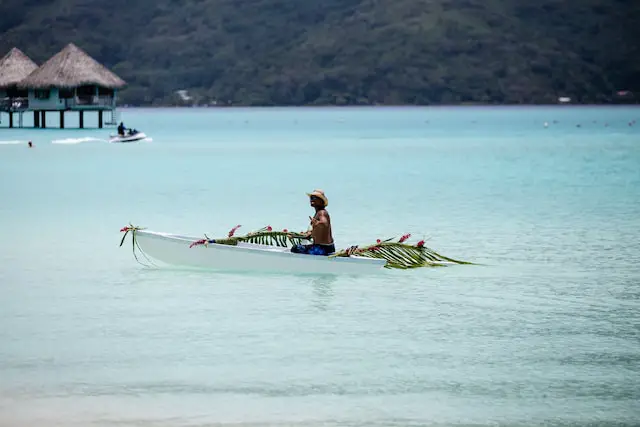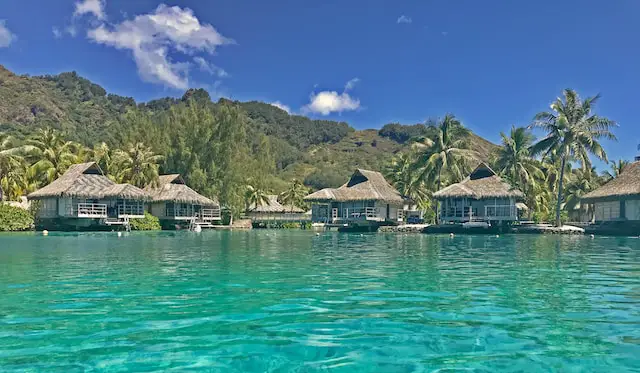French Polynesia, an overseas collectivity of France, is an archipelago that boasts a reputation as one of the world’s most sought-after travel destinations. It’s situated in the South Pacific Ocean, comprising of 118 islands and atolls spanning over 2,000 kilometers. Its lush tropical landscapes, stunning turquoise lagoons, and the rich cultural heritage of its inhabitants form a truly unique corner of our world.
The geography of French Polynesia is divided into five distinct island groups, the most famous of which are the Society Islands, home to Tahiti, Moorea, and the breathtaking Bora Bora. Each of these islands is characterized by volcanic origins, creating dramatic, rugged landscapes contrasted against azure blue lagoons. The other groups are the Marquesas Islands, Tuamotu Archipelago, Gambier Islands, and the Austral Islands.
Tahiti is the economic, cultural, and political center of French Polynesia. The capital city, Papeete, bustles with vibrancy, from its bustling markets selling local crafts and produce, to its gourmet restaurants showcasing Polynesian-inspired French cuisine. Despite the modern infrastructure, Tahiti has not lost touch with its traditional roots, which remain palpable in its music, dance, and storytelling.
Bora Bora, on the other hand, is synonymous with luxury and tranquility. Known as the ‘pearl of the Pacific,’ this island is famous for its luxury resorts and over-water bungalows, providing an idyllic setting for honeymooners and anyone seeking a tropical paradise. Its lagoon, a UNESCO Biosphere Reserve, is home to diverse marine life, making it an ideal location for snorkeling and diving.

The culture of French Polynesia is steeped in oral traditions, with legends and myths forming the backbone of its societal narrative. The traditional belief system, based on ancestral worship and the power of mana, a spiritual life force, remains influential. Christianity also has a significant presence, introduced by missionaries in the 19th century.
Polynesian music and dance are integral parts of cultural life. The ‘ote’a, a traditional form of dance, is often performed during celebrations, accompanied by drums and ukuleles. The Heiva festival, held annually in July, is one of the most significant cultural events, featuring dance performances, traditional sports, and singing competitions.
French Polynesians have a deep connection with the ocean, mirrored in their history and traditions. The ancient Polynesians were skilled navigators who journeyed across the vast Pacific in outrigger canoes. Today, the Hawaiki Nui Va’a, an annual outrigger canoe race, is held to honor these seafaring traditions.
Despite its idyllic setting, French Polynesia faces numerous environmental challenges. Its delicate coral reefs are under threat from climate change and ocean acidification. Conservation efforts are underway to preserve these ecosystems, focusing on sustainable tourism and environmental education.
The economy of French Polynesia relies heavily on tourism, pearl farming, and agriculture. The islands are renowned for their black pearls, particularly from the Tuamotu Archipelago. Agricultural products include vanilla, fruits, and copra, the dried kernel of the coconut.
The cuisine of French Polynesia is a fusion of traditional Polynesian ingredients and French culinary techniques. The national dish, poisson cru, is a salad made from raw tuna marinated in lime juice and coconut milk. The French influence is evident in the prevalence of baguettes and pastries.
The traditional Polynesian concept of ‘aita pea pea’ (no worries) embodies the relaxed and friendly demeanor of the locals. This is reflected in the fa’a’ā (the Tahitian way of life), which emphasizes living in harmony with the environment and the community. This lifestyle is centered around the concept of ohana (family), encompassing not only immediate family but also the broader community.
Education in French Polynesia follows the French system, but with added emphasis on local language and culture. While French is the official language, Tahitian and other Polynesian languages are widely spoken. Many schools offer bilingual education to preserve these indigenous languages.
Religion plays a significant role in societal life, with the majority of the population adhering to various Christian denominations. The territorial government maintains a separation of church and state, but religious occasions often become community-wide events, reflecting the tight-knit nature of Polynesian society.
Art is deeply ingrained in Polynesian culture, serving both functional and aesthetic purposes. Tattooing, for example, is a traditional art form that carries significant cultural meaning. Each tattoo is unique and tells a story about the individual’s lineage, status, and personal achievements. This tradition, which predates European contact, has experienced a revival in recent years.

Carving is another traditional art form, with wood, bone, and stone used to create sculptures, household objects, and intricate jewelry. The tiki, a human-like figure representing deified ancestors, is one of the most recognizable forms of Polynesian carving. Traditional cloth-making, using the bark of the paper mulberry tree to make tapa, is also practiced, often decorated with geometric patterns or symbolic images using natural dyes.
French Polynesia’s flora and fauna are unique, with many species endemic to the region. From the lush rainforests teeming with tropical birds to the coral reefs hosting a dizzying array of marine life, the islands are biodiversity hotspots. Efforts to conserve this natural heritage are a high priority and are embodied in several nature reserves and marine protected areas.
One such area is the Fakarava Biosphere Reserve in the Tuamotu Archipelago. This UNESCO site includes a vast coral atoll known for its pristine ecosystem and diverse marine life, including sharks, tropical fish, and vibrant coral. The islands are also home to unique bird species, such as the Tahiti Monarch and the Tuamotu Kingfisher, which are the focus of specific conservation efforts.
French Polynesia is not just a place; it’s an experience that transcends the ordinary. The dramatic landscapes, the crystal-clear waters teeming with life, the rhythm of the music, and the warmth of its people create a symphony of experiences that resonate with every visitor. This tropical paradise, however, is not just a destination for relaxation and luxury; it’s a living testament to a culture that has endured and adapted over centuries.
Even in the face of challenges, such as climate change and globalization, French Polynesia retains its unique identity. It strikes a balance between preserving its cultural heritage, developing its economy, and protecting its natural environment. As such, it offers valuable lessons on sustainability and cultural preservation.
French Polynesia encapsulates the spirit of the Pacific in its truest sense – a testament to the resilience and adaptability of its people and their culture, the enchanting beauty of its natural environment, and the enduring allure of its history and traditions. It’s a place where the past and the present merge seamlessly, creating a vibrant tapestry that continues to captivate and inspire.







